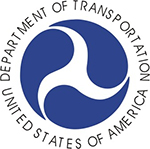Top 20 Jobs in the U.S. Transportation Industry

U.S. Departments of Transportation, Education, and Labor has released a joint transportation jobs report indicating that transportation industry growth will add 417,000 skilled and semi-skilled job openings from 2012 to 2022.
The U.S. Departments of Transportation, Education, and Labor has released a joint report entitled “Strengthening Skills Training and Career Pathways across the Transportation Industry.”
The report details the future growth areas or employment “hot spots” in transportation by industry subsectors, occupations, career areas, and geographic areas.
It also identifies good-paying, high-demand transportation jobs and analyzes the patterns in the education and work experience required for entry, including on-the-job training requirements for new entrants to gain full competency.
“Careers in the transportation industry can lift Americans into the middle class or help them stay there, and this report concludes that there will be more job opportunities in the near future,” said U.S. Secretary of Transportation Anthony Foxx. “We want to fill all these new positions, so industry and government must increase recruitment and help young people get the skills, training, and apprenticeships they need to gain entry into these careers.”
The report indicates that employers will need to hire and train a total of 4.6 million new workers – 1.2 times the current transportation workforce – due to expected growth, retirements, and turnover in the transportation industry from 2012 to 2022.
The top 20 jobs, in order from the most projected job openings to the least:
- Heavy and tractor-trailer truck drivers (1.23 million job openings)
- School or special client bus drivers (330,700 job openings)
- Laborers and freight, stock and material movers (264,210 job openings)
- Transit and inner-city bus drivers (200,530 job openings)
- Taxi drivers and chauffeurs (194,110 job openings)
- Highway maintenance workers (141,010 job openings)
- Flight attendants (96,210 job openings)
- Construction laborers (89,990 job openings)
- Bus and truck mechanics and diesel engine specialists (86,850 job openings)
- Dispatchers (85,450 job openings)
- Light truck or delivery services drivers (84,810 job openings)
- First-line supervisors of transport machine operators (75,310 job openings)
- General office clerks (70,020 job openings)
- Airline pilots, copilots and flight engineers (57,870 job openings)
- Aircraft mechanics and service technicians (57,150 job openings)
- Customer service representatives (53,370 job openings)
- Operating engineers and construction equipment operators (47,980 job openings)
- Railroad conductors and yardmasters (45,130 job openings)
- Locomotive engineers (37,190 job openings)
- General and operations managers (35,230 job openings)
Download the Report: Strengthening Skills Training and Career Pathways across the Transportation Industry
Projections suggest that 417,000 of these positions will be created as a direct result to increased demand on our transportation systems. The highest percentage of these jobs will be in transit and ground passenger transportation and these new openings will be concentrated in the West Coast, the Gulf Coast, the upper Mid-Atlantic, several Mountain States, and the Midwest.
Much of the regional transportation job growth is driven by growth in the large metropolitan areas within those regions – the highest number of job openings in transportation will likely be generated in New York City, Dallas, Los Angeles, Houston, and Chicago. In addition, these jobs will pay relatively well. Thirteen out of the top 20 highest demand transportation jobs pay above the median wage, sometimes substantially.

“Ensuring that America continues to lead the way in the global economy means not only investing in the physical infrastructure that allows us to move goods and keep up with global demand, but also the skills infrastructure to support this growing workforce,” said U.S. Secretary of Labor Thomas E. Perez. “Through smart investments in apprenticeships and other work-based training programs, transportation jobs are helping millions of Americans punch their tickets to the middle class.”
While demand for transportation workers will vary by region, subsector, and occupation, these workforce changes will result in increased job opportunities for skilled and semi-skilled workers across the transportation sector. For every future job opening in central services or construction in the transportation industry, there will be an estimated two jobs in maintenance and 21 in operations.
The recruitment and training of new and current workers responsible for the operation, maintenance, and construction of America’s transportation infrastructure will be critical to maintaining a system that meets our economic and security needs in the 21st century global economy.
But the report also highlights a significant skills gap in the demand for and supply of high skilled workers; it indicates that projected annual job openings are 68 percent larger than the number of students who are completing related educational programs annually across selected transportation occupational groups.
One solution is an increase in Career and Technical Education programs of study. Such programs begin in high school and continue into postsecondary education or apprenticeship and provide the foundational and early occupational skills training needed in skilled occupations. Pre-apprenticeship programs for disadvantaged youth and adults can prepare low-skilled and underrepresented populations for entry into these skilled positions.
Furthermore, Career Pathways systems that are aligned with Registered Apprenticeship programs can expand the number of people who can access these high-demand jobs.
“In today’s society, it is important that all of our students are well-equipped with the knowledge and skills to compete in a global economy,” said U.S. Secretary of Education Arne Duncan. “There are incredible opportunities for Americans in the transportation industry and the Department is fully committed to working with leaders in the industry to promote partnerships between education and workforce institutions in order to support training programs that will help our country succeed.”
Related: Logistics Management’s 31st Annual Salary Survey: Work Smart, Earn More

Article Topics
US Department of Transportation News & Resources
US Transportation Secretary Launches Council to Support Emerging Transportation Technology U.S. Department of Transportation 2019 Budget Highlights Bill Gates Spends $80 million to Create a “Smart City” Smart City Challenge: Lessons Learned Transportation Secretary Chao Says Infrastructure Plan Coming ‘Pretty Soon’ A Blueprint to Rebuild America’s Infrastructure Smart Mobility: Shaping the Future of Logistics More US Department of TransportationLatest in Supply Chain
Microsoft Unveils New AI Innovations For Warehouses Let’s Spend Five Minutes Talking About ... Malaysia Baltimore Bridge Collapse: Impact on Freight Navigating TIm Cook Says Apple Plans to Increase Investments in Vietnam Amazon Logistics’ Growth Shakes Up Shipping Industry in 2023 Spotlight Startup: Cart.com is Reimagining Logistics Walmart and Swisslog Expand Partnership with New Texas Facility More Supply Chain













